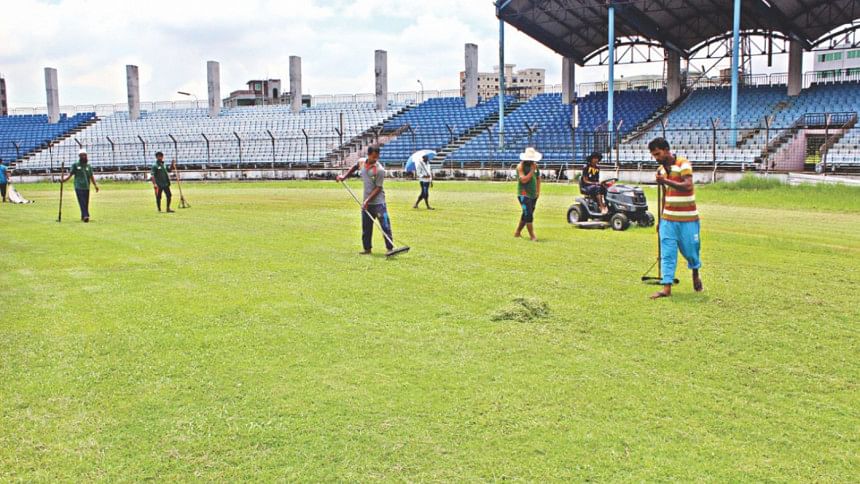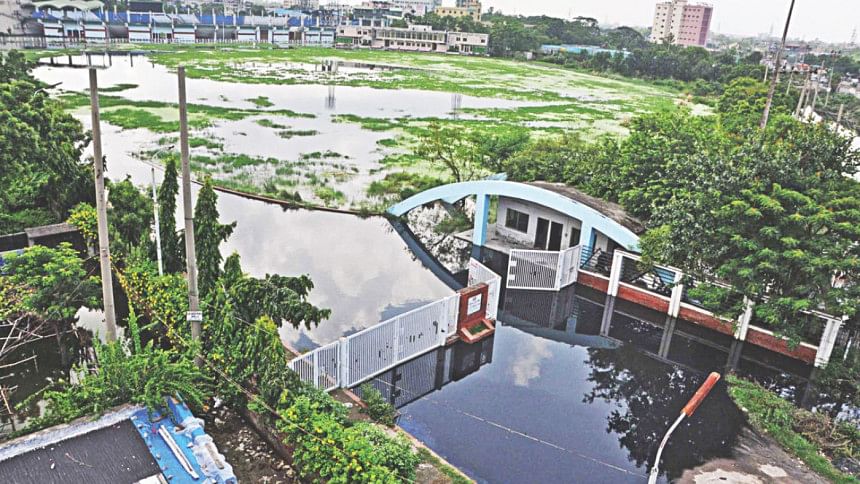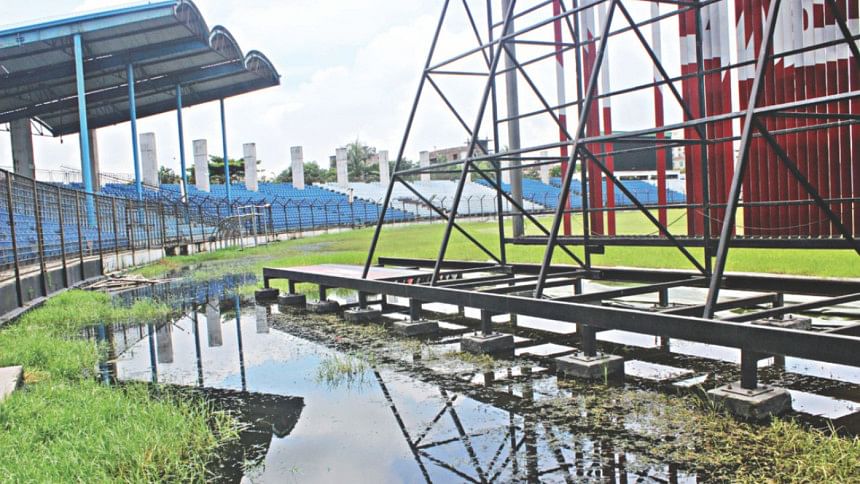Fatullah set to miss Aus game

An inspection team from Australia will be arriving in Dhaka tonight to work out the small details of its cricket team's tour to Bangladesh next month. The Aussies are scheduled to land in Dhaka on August 17 to play two Tests. They will also play a two-day practice game, which is at the moment scheduled to be held at the Khan Shaheb Osman Ali Stadium in Fatullah before the opening Test.
But despite being a cricket ground of international standards, the 25,000-capacity venue that has played host to two Tests, 10 ODIs and four T20Is, is presently submerged. It is water-logged at the slightest hint of rain and with the monsoon in full swing there is little chance for the venue to host the Australia practice game. And as an alternative arrangement, the Bangladesh Cricket Board (BCB) is contemplating whether to shift the fixture from Fatullah to the BKSP in Savar.
"Work is going on to pump out the water from the facility. I think by the time Australia will be arriving here the water-logging issue will be solved. But we have also selected the BKSP as an alternate venue," BCB CEO Nizamuddin Chowdhury told The Daily Star last night.

He however admitted that the water-logging issue was something which could not be solved immediately.
"A team from BUET is working along with an NSC team for a long-term solution for an improved drainage system not only of the facility but also for surrounding areas," he said.
A recent visit to the venue, which is about 17 kilometres from Dhaka, depicted a sorry state. Workers used as many as five pumps to remove water from different points of the facility, but the moment those pump stopped, water coming through the sewage system submerged the area, including the entrances to the venue. At the moment they could only remove the water from the pitch and part of the lush green main ground.
Often the water-logging becomes so severe that employees have to use bamboo sticks to make walkways in order to move about the venue. The rainwater also mixes with sewage and waste from nearby dying factories which results in black-coloured water, which gives off a pungent smell.
"We live in the stadium's quarters. I have to take my children to school through this dirty water. Even the area in front of the quarters is flooded. I have been seeing the water-logging in the field outside the stadium for the past few years, but it is worse here this time around," said Jahida Akhter, a resident of the quarter.
"This time the water here is knee-deep. Because of the water-logging in the DND dam, the water from manholes and sewers is seeping into the ground. And that water is contaminated," she added.
Except for the main entrance to the venue -- which has also got an open playing surface, now looks like a big pond -- the other four entry points were inaccessible due to water-logging.

"There are dying mills and garments factories half-a-kilometer away. The dirty water from these, combined with sewage from the Ramarbagh area and Lampara area, seep into the field from one side," said Shahid Ahmed, a local from the neighbouring Lampara area.
"These drains are not very effective. If it rains for a few hours than the area becomes completely flooded, because of which the water-logging in the stadium occurs," he continued. "It is possible that the water-logging may decrease if new drains are installed or if the existing drains are cleaned quickly. The drainage system inside the stadium can also be changed so that the scope of the problem is lessened," observed Shahid.
Saiful Alam, an employee of the stadium, informed that they used five pumps simultaneously till June 21 to alleviate the problem. However, that did not resolve the issue.

"Now only one of the pumps is working and it is getting inundated whenever it rains. There is no water on the main ground, but the outer ground is still flooded. I hope that will go away soon," he said with a hint of uncertainty.
Experts however feel that the problem will persist unless the drainage system is improved in that area. When the stadium was built at the turn of the century, the surrounding area was mostly low-lying. But after more than a decade the areas surrounding the venue have seen an unplanned development that contributed to a flawed drainage system.
"The ground in the surrounding areas have been elevated and that's why water from every conceivable channel enters the facility. It's not possible for a massive earth-filling, but if the drainage system is rearranged it can solve the water-logging of the stadium," said an expert from BUET preferring not to be named.

 For all latest news, follow The Daily Star's Google News channel.
For all latest news, follow The Daily Star's Google News channel. 



Comments